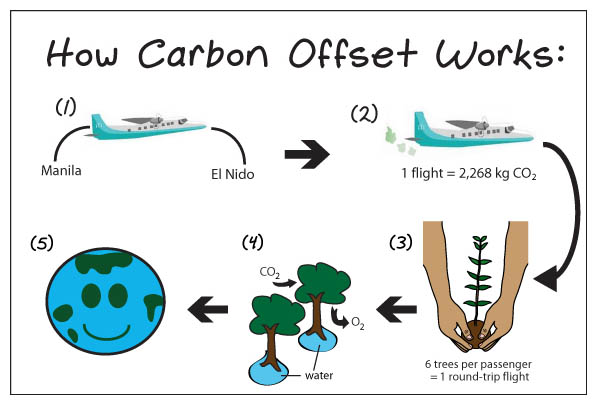Carbon credits allow a business or organization to emit carbon dioxide (CO2), one of the primary contributing greenhouse gases (GHGs) to climate change, to a specific limit. Experts agree that a single credit is equivalent to the right to generate one ton of CO2. To put one ton of CO2…
How To Verify Carbon Credits
How To Verify Carbon Credits
2023-01-25
YaShekia King
Carbon credits allow a business or organization to emit carbon dioxide (CO2), one of the primary contributing greenhouse gases (GHGs) to climate change, to a specific limit. Experts agree that a single credit is equivalent to the right to generate one ton of CO2.
To put one ton of CO2 into perspective, according to the MIT Climate Portal, that’s as much as:
- A one-way trip from Boston to Salt Lake City by car (slightly over 2,400 miles)
- A one-way trip from Boston to London by airplane (more than 3,200 miles)
- Enough to fill three-and-a-half Olympic-size swimming pools
- The weight of a fully-grown female great white shark
These comparisons make earning carbon credits a big deal for commercial entities. However, for these environmental currencies to have any value, they must be verified by a third party. Here’s a closer look into carbon trading and the steps to verify the exchange.
Use The MRV Approach
Carbon credits were developed following the creation and ratification of the Kyoto Protocol in 1997. Annex B outlines the emissions caps for each of the 37 industrialized signatory countries. The list also includes the U.S. which signed but never ratified the protocol.
The cap-and-trade system benefits businesses and organizations by buying and selling excess carbon credits when necessary. An entity that manages to function far below its limit can sell excess credits to another that needs them to work correctly. If the latter doesn’t buy credits, it must pay a carbon tax for generating emissions beyond its limit.
Carbon taxes are designed to discourage entities, so carbon credits are often the way to go. In the U.S., except in California, the emissions trading scheme is managed by third-party private firms.
The firms issue credits through an approach the World Bank refers to as Measurement, Reporting, and Verification (MRV). As the term implies, MRV involves three steps.
- Gathering data on a project or program’s emission reductions relevant to the baseline, which differs by sector and scale (measurement)
- Compiling the results of periodic monitoring into a report to be submitted to a third-party entity for verification (reporting)
- Sending the report to the standard-setter for final certification, after which notifying the applicable transaction registry to issue credits (verification)
The MRV is far from perfect, and not all countries have the resources to manage it. According to Andres Espejo, World Bank Senior Climate Change Specialist, MRV capacity building requires the support of major trust funds like the Forest Carbon Partnership Facility.
While comprising only three steps, Espejo adds that the entire process can take more than a year to complete. The credits earned ultimately benefit the country, as they’re the measurement used to determine a country’s Nationally Determined Contributions, per the Paris Climate Accords.
Use Carbon Trading Standards
Due to the trading market being governed by private firms, there’s a need for standards to ensure the legitimacy of all carbon credits being issued. This task falls to a collective of nonprofits, of which the so-called Big Four include:
-
Verified Carbon Standard (VCS)
Verra’s VCS is arguably the most widely-used standard worldwide, focusing primarily on GHG reduction without requiring a project to provide additional environmental benefits. It has undergone significant changes four times since its induction in 2006, the latest iteration being Version 4 in 2019.
-
American Carbon Registry (ACR)
Initially established in 1996 as the GHG Registry, the ACR outlines standards for carbon offset methodologies. It serves as the basis for California’s state-sponsored cap-and-trade program, which remains the only one of its kind in the U.S.
The Gold Standard was established with the idea of helping the world achieve the United Nations’ Sustainable Development Goals. It requires any project to benefit neighboring communities as much as its direct beneficiaries.
-
Climate Action Reserve (CAR)
The CAR is unique because its emission reduction program is approved under one of the Big Four—notably, the VCS. It issues and tracks carbon credits, called Climate Reserve Tonnes, and has established standards for quantifying emission reductions. Of interesting note is that it began as a state-driven program known as the California Climate Action Registry.
It pays to visit websites on these standards and check if the third-party responsible for the MRV is certified or adheres to the standards. It’s a good way to avoid potential scams in the industry, of which cases are aplenty.
Conclusion
Verifying carbon credits is at the hands of the private industry, and state-sponsored carbon trading programs are, at the moment, few and far between. Nevertheless, the combination of standards and growing environmental awareness helps make carbon trading a legitimate and stable market. Above all else, staying within the limit helps the country as much as the business or organization.


